
Richard Steacie
Born March 29, 1871. Killed in Action April 22, 1915.
Lived at 202 Summit Avenue, Westmount, QC
Captain Richard Steacie was an Irish-Canadian soldier who lived in Westmount, and who gave his life during the Second Battle of Ypres, in 1915. Remembered as “the bravest officer of all” by his men, Captain Steacie’s sacrifice is still remembered over 100 years later.
Born in Ireland on March 29, 1871, Captain Steacie was a seasoned soldier who commanded respect among his men. Before joining the Royal Montreal Regiment in September 1914, Captain Steacie had been with the Grenadier Guards of Canada for 20 years, one of the regiments who helped form the RMR in 1914. In his civilian life, he worked as a secretary for Smart-Wood Company Ltd (a canvas, jute and cotton goods manufacturer) and was married to Mrs. Alice K. Steacie and they had one son, Edgar William Richard. The family lived in Westmount, on Summit Crescent. On October 4, 1914, Captain Steacie sailed for England with the RMR, never to set foot on Canadian soil again.
Captain Steacie’s enlistment paperwork notes that he changed his birth year, claiming he was born in 1881, not 1871. At 44, he was on the cusp of being too old for active service, but his dedication to his country had no limits.
Captain Steacie was 47 when he was killed in action, shot through the neck while he led his men into battle during the Second Battle of Ypres on April 22, 1915. At the time of his burial, Captain Steacie’s body had not been identified, so his tombstone was marked as “A Captain Of the Great War, 14th BN. Canadian Inf. Known Unto God”. In 2013, the RMR’s Captain Grant Furholter took the time to painstakingly cross reference burial information and officer profiles, eventually proving the location Captain Steacie’s final resting spot. A tombstone with his name was erected, and the original tombstone was brought to Canada and is now displayed in the RMR Museum.
Despite losing his life over 100 years ago, Captain Steacie’s story remains central to the RMR’s history. Notably, his son, Edgar, kept scrapbooks of his father’s involvement in the war, saving newspaper clippings, cards, notes and telegrams glued in a large green book. Thanks to this record-keeping, we have access to the forms of communication from the period, and the visible heartbreak of a young boy who lost his father to the war. Additionally, Captain Steacie’s sword, donated to the Regiment by his descendants, is carried on parade by the RMR’s Commanding Officer to remind them to ‘Lead from the Front.’

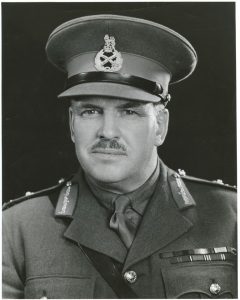





 Thomas Cripps Lewis, DSO
Thomas Cripps Lewis, DSO
 Marcel McBarnett
Marcel McBarnett Edward George (Taffy) Evans
Edward George (Taffy) Evans Edwin Cowen, MC, DCM
Edwin Cowen, MC, DCM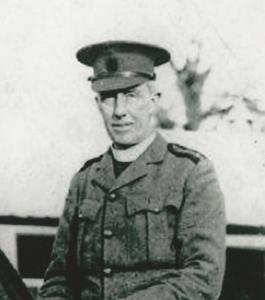 Hon. Lt-Col. Rev. Canon Frederick George Scott, CMG, DSO
Hon. Lt-Col. Rev. Canon Frederick George Scott, CMG, DSO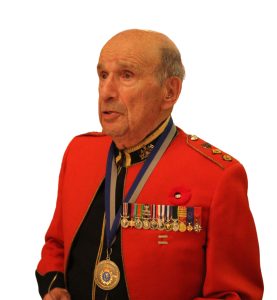 David Lloyd Hart, MM, CD
David Lloyd Hart, MM, CD Stanley Maxwell Enair, MM
Stanley Maxwell Enair, MM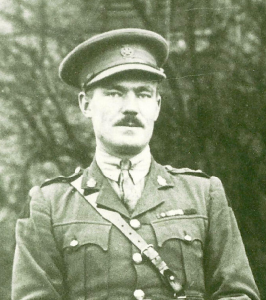 Dick Worrall, DSO (bar), MC (bar)
Dick Worrall, DSO (bar), MC (bar)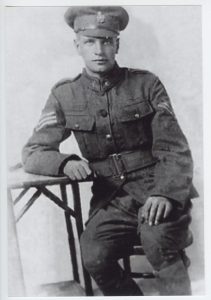 William James Lambourne
William James Lambourne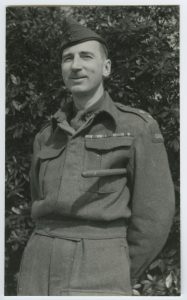 James Eric Slessor, ED
James Eric Slessor, ED Paul Hebert Barre, ED
Paul Hebert Barre, ED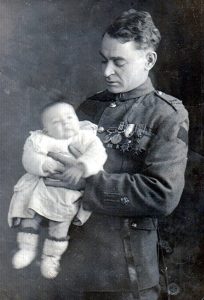 John Hilliard ‘Hillie’ Foley, DCM (bar), MM, CdeG
John Hilliard ‘Hillie’ Foley, DCM (bar), MM, CdeG James Albert ‘Jimmy Jesus’ Mitchell, M.B.E.
James Albert ‘Jimmy Jesus’ Mitchell, M.B.E.